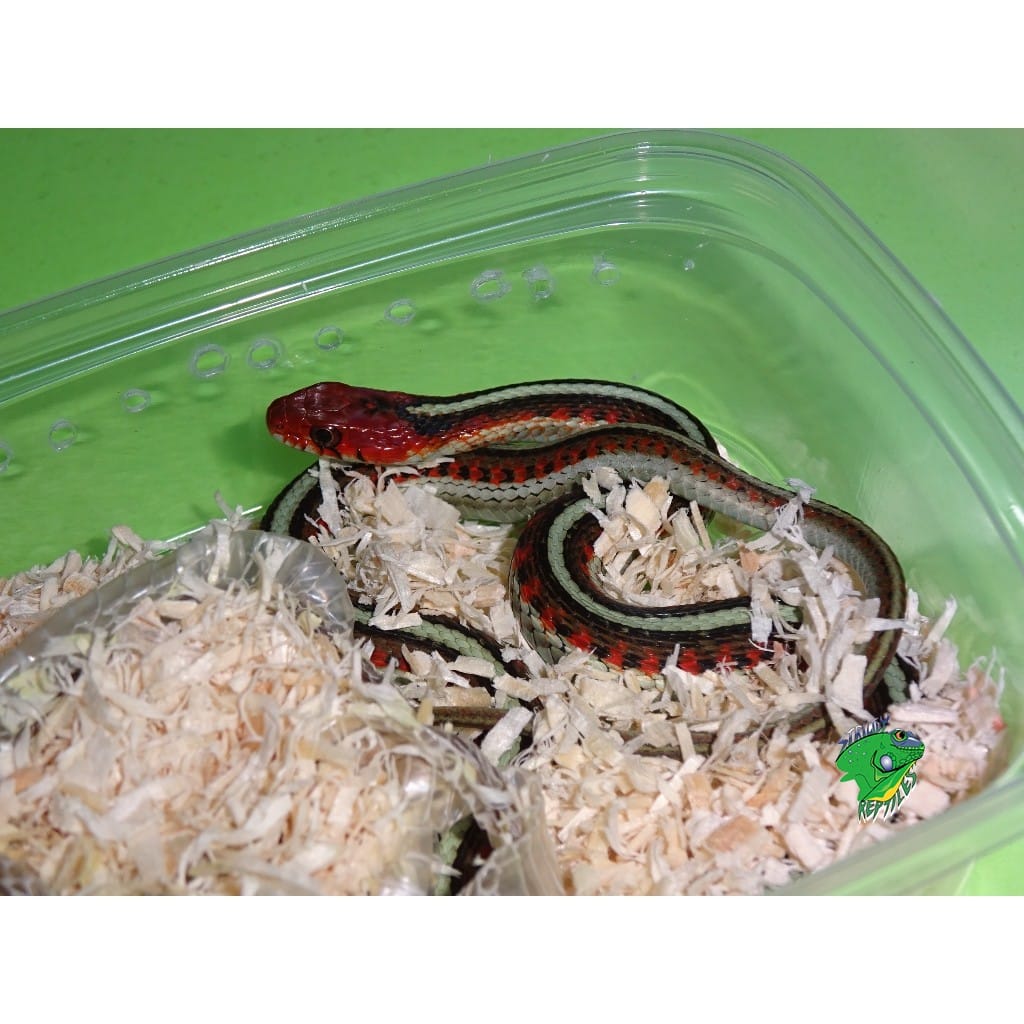The California red-sided garter snake (*Thamnophis sirtalis infernalis*) displays a striking pattern of red and black, accented by blue or yellow stripes, making it a visually captivating reptile. Dive into the vibrant world of this subspecies of the common garter snake, which calls the Golden State’s coastal regions home. From its remarkable social behavior to its unique diet and the myths surrounding its “venom,” this fascinating creature offers a glimpse into the intricate web of life along the California coast. Prepare to be charmed by the California red-sided garter snake.
Unveiling the Secrets of the Red-Sided Garter Snake
The California red-sided garter snake, a subspecies of the common garter snake, is a true marvel of nature. Native to California’s coastal areas, these snakes thrive in diverse environments, from damp marshes to sandy dunes. They play a vital role in their ecosystem, controlling populations of amphibians, rodents, and invertebrates. Learning about them offers valuable insights into the delicate balance of nature along the California coast.
One of the most captivating aspects of these snakes is their complex social behavior. In springtime, thousands gather in massive mating aggregations—a spectacle that must be seen to be believed. This writhing mass of snakes, all searching for mates, is a testament to their unique reproductive strategy. When the weather turns cold, they exhibit another remarkable behavior: communal hibernation. Huddling together in dens, they share body heat to survive the winter, demonstrating a remarkable level of cooperation.
Their striking appearance—vibrant red stripes against a checkered pattern—might give some pause. While they may look intimidating, California red-sided garter snakes are not venomous to humans. They do produce a mild neurotoxin, but it’s primarily designed to subdue their prey, not to harm people. A bite may cause minor irritation, similar to a mosquito bite, but serious effects are extremely rare.
Decoding the Diet of a Coastal Predator
What sustains these captivating reptiles? California red-sided garter snakes boast a diverse diet, primarily feasting on amphibians like frogs, salamanders, and tadpoles. However, they are opportunistic feeders, also consuming earthworms, slugs, small fish, and occasionally small mammals. This varied diet helps regulate amphibian populations, contributing to the overall health of the ecosystem.
Demystifying the “Venom”: Separating Fact from Fiction
The word “venom” often evokes images of danger, but the reality for the California red-sided garter snake is far less dramatic. While they possess a mild neurotoxic venom used to immobilize prey, it has virtually no effect on humans. Some individuals may experience minor irritation after a bite, akin to a mild allergic reaction, but serious effects are extremely unlikely. Ongoing research continues to explore the exact composition of their venom and its effects on different prey species.
Conservation Challenges and Future Directions
Although not currently endangered, California red-sided garter snakes face growing threats from habitat loss due to human development and the impacts of climate change. Protecting their coastal homes is crucial for their long-term survival. Scientists are actively studying the effects of these environmental changes on their populations and exploring effective conservation strategies. Understanding their behavior, diet, and habitat preferences is essential for developing successful conservation plans. Further research may unveil even more about their complex ecological role. Perhaps there are other fascinating aspects of their biology and behavior yet to be discovered. The future of research on the California red-sided garter snake promises exciting new insights.
Are Red-Sided Garter Snakes Illegal in California?
No, red-sided garter snakes are not illegal in California. They are a common sight, particularly along the coast. Encountering one while exploring California’s beautiful coastline is not a cause for concern. They are an integral part of the local ecosystem. Let’s delve deeper into what makes these snakes so fascinating.
Appearance: A Vibrant Display
Imagine a sleek, shiny snake adorned with eye-catching red stripes along its sides, often accompanied by a checkered pattern. These snakes typically measure between two and four feet long. Their striking appearance makes them relatively easy to identify, though variations in color and pattern can occur.
Social Behavior: The Butterflies of the Snake World
These snakes are surprisingly social, gathering in large groups, sometimes numbering in the thousands, especially during mating season. These impressive gatherings, known as aggregations, are a sight to behold. During colder months, they exhibit another fascinating social behavior: communal hibernation in dens, sharing body heat for warmth.
Diet: Amphibian Aficionados
Red-sided garter snakes primarily dine on amphibians, especially frogs and salamanders, acting as natural amphibian population control. However, they are opportunistic feeders, also consuming earthworms, slugs, small fish, and occasionally small mammals. This dietary adaptability contributes to their success in coastal environments.
Mild Toxins, Not Venomous
While they produce mild toxins, these are not considered venomous to humans. The toxins subdue their prey but pose little threat to people. A bite may cause minor irritation, but serious complications are highly improbable. As always, cleaning any bite wound and monitoring it is recommended.
Conservation Status: A Future Uncertain
Like many species, red-sided garter snakes are facing challenges due to habitat loss and climate change. As coastal areas develop and natural habitats shrink, their survival becomes increasingly precarious. Ongoing conservation efforts aim to protect these captivating reptiles and ensure their continued presence in California’s coastal ecosystem.
California Red-Sided Garter Snakes as Pets: A Comprehensive Guide
Are you considering a California red-sided garter snake as a pet? These snakes, with their striking red stripes and generally docile nature, are a popular choice for reptile enthusiasts. They are relatively low-maintenance compared to some other reptiles. However, like any pet, understanding their specific needs is crucial before bringing one home.
Temperament: Mellow and Docile
California red-sided garter snakes are typically docile, rarely displaying aggression. They tend to be shy and reclusive, preferring to blend into their environment. While not cuddly, they generally tolerate handling well once accustomed to it. If threatened, they may nip or release a musky odor as a defense mechanism.
Mild Toxins: Not a Threat
These snakes are non-venomous to humans. While they have mild toxins to subdue prey, these pose no significant threat to people. Some individuals may experience minor skin irritation from the saliva, comparable to a mild insect bite. Washing hands after handling is always recommended.
Diet: Amphibian Appetite
In captivity, their diet can be replicated with commercially available frozen/thawed prey like small fish and amphibians. Offer prey no larger than the widest part of the snake’s body.
Enclosure: Creating a Comfortable Abode
A 20-gallon tank is the minimum recommended size for a single adult, though larger is always better. The enclosure should have a secure lid, a hide, a basking area with a heat lamp (85-90°F basking spot, 75-80°F cooler side), a shallow water dish, and 50-60% humidity.
Handling: Gentle is Key
Always support their body during handling, avoiding sudden movements. Avoid squeezing them tightly. Wash your hands before and after handling.
Conservation: Playing Your Part
While not endangered, their populations are affected by habitat loss and other factors. Supporting organizations that protect their habitats is essential.
Pros & Cons of Ownership
| Pros | Cons |
|---|---|
| Docile temperament | Musky odor when threatened |
| Easy care | Specific temperature and humidity needs |
| Non-venomous | Not cuddly or interactive |
| Beautiful and interesting | Can be shy |
| Relatively long lifespan |
Conclusion: A Unique Pet for the Right Owner
With proper care, a California red-sided garter snake can be a rewarding pet. However, consider their specific needs, shy nature, and lack of traditional cuddliness. Research is key.
Sizing Up the California Red-Sided Garter Snake
Just how big do California red-sided garter snakes get? Size provides important insights into an animal’s interactions with its environment. Interestingly, females are significantly larger than males. Females can reach 35-39 inches (90-100 cm), while males typically reach 25-29.5 inches (65-75 cm). While long, they are slender and lightweight, making them agile and quick.
This size difference between sexes, called sexual dimorphism, is common in the animal kingdom. Why it’s so pronounced in this species is still being researched. Larger females may produce more eggs, providing a reproductive advantage. Other theories suggest a role in courtship or resource competition.
| Sex | Length (cm) | Length (inches) |
|---|---|---|
| Female | 90-100 | 35-39 |
| Male | 65-75 | 25-29.5 |
These are average sizes. Individual size can vary based on factors like food availability, environmental conditions, and genetics. Younger snakes are smaller than adults, growing steadily throughout their lives.
Our understanding of these snakes is continually evolving. Ongoing research may reveal new insights into their size variations and other fascinating aspects of their biology.
Inspire yourself with the fearless Bessie Coleman’s motivational quotes which made her the first African American and Native American woman pilot in the world. Explore her Bessie Coleman quotes to be ignited with courage and determination.













2 thoughts on “California Red-Sided Garter Snake: Facts, Habitat, Diet, and Are They Dangerous?”
Comments are closed.